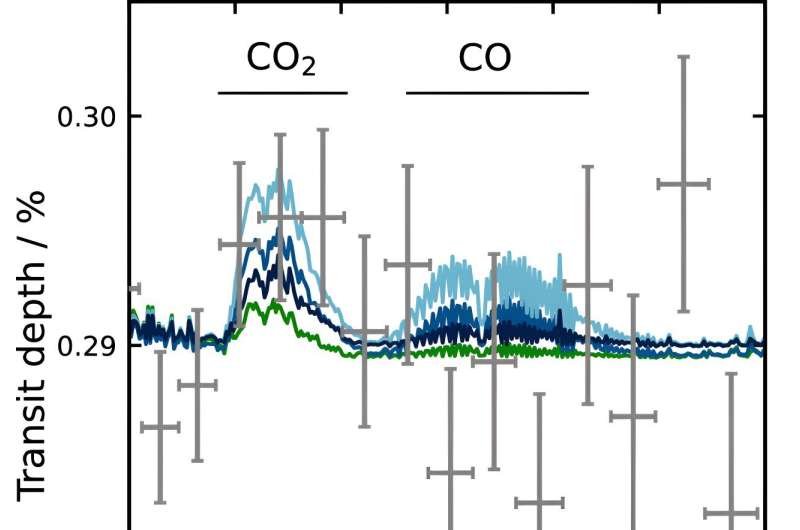A multi-institutional team of astronomers, Earth scientists and planetary physicists has found evidence, via data from the James Webb Space Telescope (JWST), that some hycean exoplanets may have molten surfaces rather than watery oceans. In their study, published in The Astrophysical Journal Letters, the team analyzed data from JWST as it was focused on the hycean exoplanet K2-18b.
Prior research has suggested that there are certain exoplanets that have attributes that classify them as archetypically hycean. Such exoplanets are typically sized between Neptune and Earth and have an atmosphere that suggests the presence of surface water. Such planets are typically targeted by researchers looking for life beyond Earth.
For this new study, the team focused their efforts on one particular hycean exoplanet called K2-18b. It has received attention before as a possible host of extraterrestrial life, but this is the first time it was studied using data from JWST.
The research team looked at models of the planet constructed by previous teams, some of whom found evidence that the planet might be too hot to host an ocean—water would have evaporated. JWST data revealed evidence that agreed with such assessments; the researchers then conducted an analysis of the planet’s atmosphere. They looked at it in two ways: as if the planet hosted an ocean and; as if the planet instead had a molten surface. They found that either scenario matched data from JWST. But because the planet is so hot, the latter scenario is likely correct.

The research team suggests that efforts involved in looking for life on exoplanets should first test planetary temperature to ensure that it is not too hot to host an ocean. They further state that data from JWST could prove to be indispensable in the coming years for such studies.
The authors conclude, “Developing clear disambiguating atmospheric tracers for the presence of liquid-water versus magma oceans is key in our quest of finding potentially habitable worlds among the exoplanet population.”
More information:
Oliver Shorttle et al, Distinguishing Oceans of Water from Magma on Mini-Neptune K2-18b, The Astrophysical Journal Letters (2024). DOI: 10.3847/2041-8213/ad206e
© 2024 Science X Network
Citation:
JWST data suggest exoplanet K2-18b may have molten surface rather than a watery ocean (2024, February 9)
retrieved 11 February 2024
from
This document is subject to copyright. Apart from any fair dealing for the purpose of private study or research, no
part may be reproduced without the written permission. The content is provided for information purposes only.